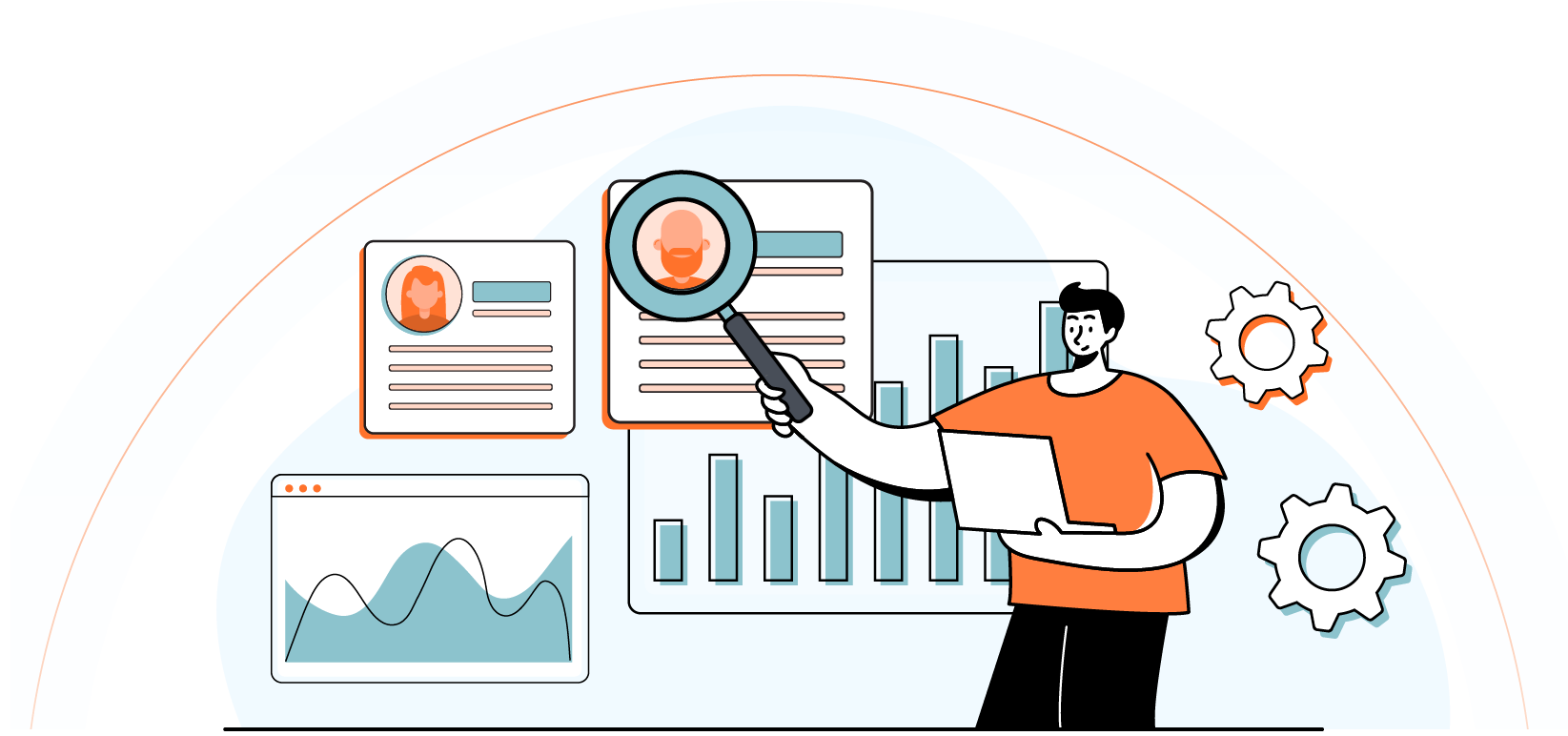THE SCIENCE OF SELLING TO SCIENTISTS
CHAPTER 2
Researching the Researchers
There are many angles you can take when contacting a scientific buyer, and a lot of the information about their professional background and work is available to find online. This chapter discusses the different types of available data to better understand your scientific buyer, and how to use it.

Contents
– Introduction
– Researching the Scientist’s Background
– Identifying the Buying Committee
– Research Topics and Scientific Interests
– Sales Signals: Unlocking Key Opportunities
– Conclusion
Understanding Your Audience: The Scientific Buyer
When selling to scientists, conducting in-depth research is essential for fully understanding your audience. Unlike typical buyers, scientific professionals rely on a combination of technical expertise, peer-reviewed evidence, and a meticulous evaluation process to make informed decisions. This chapter will guide you through the key aspects of researching your scientific prospects, helping you gather vital insights that enable you to engage with them more effectively.
Researching the Scientist’s Background
To build rapport with a scientist, it is crucial to understand their professional journey, areas of expertise, and current research objectives. This requires delving into their academic history, current institutional affiliations, and publication records.
Publications and Research Focus
Utilize tools like SciLeads, PubMed, and Google Scholar to explore a scientist’s publication history. Pay attention to the key topics they publish on, as this provides direct insight into their research interests and challenges.
Professional Networks and Collaborators
Understanding a scientist’s network is equally important. Researchers often collaborate with others in their field, creating interconnected networks that can influence their decisions. SciLeads and LinkedIn Sales Navigator are excellent tools for identifying their key collaborators and influential connections.
Affiliations and Memberships
Scientists frequently belong to specific academic societies and research organizations. Tracking these memberships can provide clues about their broader interests and the communities they regularly engage with.
Tradeshow Attendance
Identifying the meetings and tradeshows that your prospects are attending and speaking at can create numerous opportunities to meet in person, learn about their experiences firsthand, and connect with similar delegates who could become your next customers. SciLeads provides information on attendance and speaking engagements for over 2,000 tradeshows worldwide, helping you plan where to be.
Identifying the Buying Committee
Scientific purchasing decisions often involve multiple stakeholders. While a Principal Investigator (PI) typically drives the decision-making process, lab technicians, post-docs, procurement officers, and collaborators may also influence purchases.
Key Decision-Makers
Determine who the key players are within the lab or institution. Their laboratory websites usually offer a detailed overview of team members and the organizational structure. Be sure to identify all individuals in the lab who may influence purchases.
Collaborators and Influencers
As mentioned earlier, a researcher’s collaborators may have already purchased or recommended a product. Tools like SciLeads can provide historical purchasing information and names associated with prior transactions, indicating levels of buying authority. Having this information can create valuable openings for discussions.
Procurement Process
Understand the procurement protocols of the institution. Many academic institutions and biotech firms operate under strict funding guidelines, and knowing these rules can help you tailor your approach to fit their buying cycle.
Research Topics and Scientific Interests
Understanding the specific challenges and objectives your target scientist faces is critical. Focus on the specific questions they are addressing in their research and how your product can align with those goals.
Current Research Projects
Use tools like SciLeads or HigherGov to gather information about ongoing research projects and grants. Knowing which projects a researcher is currently involved in can help you position your product as a solution to their most pressing needs.
Research Funding
Scientists depend heavily on grants and funding to support their research efforts. You can monitor some funding sources directly by visiting databases such as NIH RePORTER, but to see the full spectrum of funding sources, awarded amounts, and project durations, SciLeads is the ideal solution. Use it to identify new prospects with confirmed project funding or assess whether your pipeline has the financial backing necessary to invest in your solution.
Sales Signals: Unlocking Key Opportunities
Sales signals are indicators that a prospect may be primed for engagement. Identifying these signals can help you reach out at the right time with a relevant and personalized offer.
Upcoming Talks and Presentations
A scientist preparing for a conference or public talk may be more open to exploring new tools or products. Keeping tabs on upcoming speaking engagements using SciLeads and monitoring professional networks like LinkedIn and X (formerly Twitter) can provide timely opportunities to initiate contact.
Publications and Submissions
Monitoring publications, particularly in high-impact journals such as Nature or Science, serves as a crucial sales signal. These publications not only highlight a scientist’s latest work but also provide an excellent opportunity to discuss how your product can support their upcoming projects
Awards and Recognitions
Winning a grant or receiving an award often indicates that a scientist will have the resources and motivation to invest in new tools. To keep up with these developments, set up alerts through databases like SciLeads or HigherGov.
By establishing alerts for events such as upcoming talks, journal publications, or research grants, you can stay informed about key sales signals. This proactive approach enables your sales and marketing teams to act promptly while the opportunity is fresh, positioning your product as a timely and relevant solution to the researcher’s needs.
Conclusion
Researching your scientific prospects involves more than just understanding their job titles or institutions. By delving into their professional backgrounds, identifying the key members of their buying committees, and tracking sales signals that indicate openness to new products, you can create a highly targeted sales approach. This thorough research not only enhances your ability to connect with scientists but also increases your chances of closing sales, establishing you as a trusted partner in their research endeavors.
Next, we will explore how to utilize specific tools to gather detailed profiles of your prospects in Chapter 3.
The Science of Selling to Scientists
1: Introduction - Selling to Scientists
2: Researching the Researchers
3: Tools for Researching
4: Lists, Alerts & Signal Monitoring
5: Prospecting: Grants & Funding Research
6: Prospecting: Publications, Authors & Collaborators
7: Prospecting: Tradeshow Attendance & Participation
8: How to Write Cold Sales Prospecting Emails
9: Cold Sales Prospecting: LinkedIn
10: Automating Sales Prospecting
11: Conclusion
UP NEXT
Carry on Reading

CHAPTER 3
Tools for Researching Academic and Professional Profiles
To effectively reach your target audience, it’s crucial to understand their professional backgrounds and research interests. This chapter highlights five essential tools for accessing detailed academic and professional profiles, helping you gather valuable insights.
FREE DOWNLOAD
Prefer a PDF Download?
Visit the link below and download all 10 chapters in one convenient guide.

